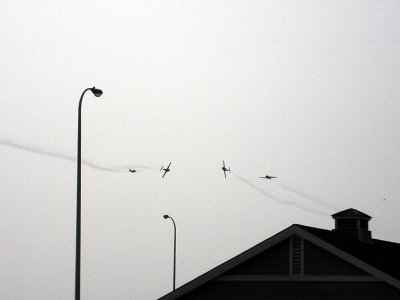Balance.
Before I started flying I always thought that in order to go faster in an aircraft all you had to do add power, I later learned that my assumption was only half right.
If your cruising along at say 100 kts and you add power then keep an eye on the airspeed gauge, you'll be surpised to see that aren't going any faster. If you then look over at your altimeter and vertical speed indictor they'll indicate that you're now climbing. I found this surprising the first time my instructor explained and showed me this concept.
The faster you go the more lift your wings produce, if you forget to retrim the aircraft so that your wings have a lower angle of attack (AoA), relative to the airflow, then nearly all that extra power will be converted into lift. The opposite is true as well, pull the power back and forget to retrim to increase your AoA and you'll maintain the same airspeed as before, but you'll be descending.
Student pilots quickly manage this concept earlier in their training as this concept is put to use during every landing. When I'm preparing the aircraft for landing I usually pull the power back near the end of the downwind in order to slow down. As I pull the power back I have to add increasingly more back pressure on the yoke to maintain my circuit altitude until I slowed down to my approach speed, which is 75 mph. Once I hit my approach speed I trim the aircraft to fly at this speed without any imput from the controls.
During my base and final legs I use my power settings to control my descent, if I'm a little high I pull the power back, and descend at 75 mph, if I'm a little low I add some power and then I can climb or reduce my descent rate until I'm back on the proper glideslope.
Keep in mind that this is a rather simple explaination on how power effects the aircraft and how these concepts are used by us students from day one.
I took in an airshow last weekend in Summerside, the Snowbirds were performing. The show was kicked off by a single CF-18, it was awesome to say the least as this fighter has power to spare. I paticularily liked the display of power in the vertical climb. He slowly flew across the harbor at a couple hundred feet and then he simply pointed his nose skyward and added power. I could actual see the aircraft accelerating in a vertical climb. (He topped out at around 25,000 ft. out of sight)
I managed to take a pic just as he was going vertical:

I had to post a couple of pics of the Snowbirds as well.
Traffic:

A low pass:

A really low pass:


0 Comments:
Post a Comment
<< Home